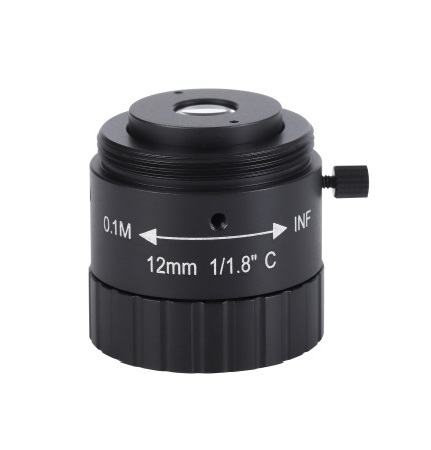Differences and Advantages Between Industrial Lenses and Ordinary Lenses

In the field of optical imaging, although industrial lenses and ordinary lenses are based on the same optical principles, there are significant differences in design concepts, performance metrics, and application scenarios. These differences are not only reflected in technical parameters but also deeply illustrate the fundamental distinctions in their functional positioning and usage requirements. From precision manufacturing to daily life, from scientific research to industrial production, industrial lenses play an irreplaceable role in professional fields with their unique performance advantages.
1. Differences in Design and Performance
The optical structure design is the primary difference between industrial lenses and ordinary lenses. Industrial lenses adopt complex optical structures, typically consisting of more than 10 lens groups, using special optical glass materials. This design ensures stable imaging in harsh industrial environments, while ordinary lenses usually employ simplified designs with 5-7 lens elements to reduce costs.
The differences in material selection and manufacturing processes directly affect lens performance. Industrial lenses use high-purity optical glass and special coating materials, employing nano-level precision processing to ensure optimal optical performance for each lens. Ordinary lenses, on the other hand, prioritize cost considerations, using standard optical materials and mass production techniques.
A comparison of performance parameters reveals clear differences. Industrial lenses typically achieve resolutions of over 50 megapixels, with distortion rates of less than 0.1%, while ordinary lenses generally have resolutions around 20 megapixels, with distortion rates above 1%. These performance differences directly determine their respective application scenarios.
2. Comparison of Application Scenarios
Adaptability to industrial environments is a significant advantage of industrial lenses. Industrial lenses can operate stably in harsh conditions such as high temperatures, high humidity, and strong vibrations, with protection ratings reaching IP67 or higher. Ordinary lenses are primarily designed for normal temperature and pressure environments and cannot withstand stringent industrial conditions.
The performance differences in special environments are even more pronounced. Industrial lenses can function normally within a temperature range of -40°C to 85°C, with shock resistance exceeding 100G. Ordinary lenses typically operate within a temperature range of 0°C to 40°C, with shock resistance below 10G.
A comparison of lifespan and stability highlights the advantages of industrial lenses. The mean time between failures (MTBF) for industrial lenses can exceed 50,000 hours, with performance degradation controlled within 5%. Ordinary lenses generally have a lifespan of around 10,000 hours, with potential performance degradation of over 20%.
3. Differences in Functionality and Expandability
The integration of special features is a hallmark of industrial lenses. Industrial lenses typically include professional functions such as autofocus, automatic aperture, and image stabilization, supporting remote control and parameter adjustments. Ordinary lenses, in contrast, have relatively simple features, mainly meeting basic imaging needs.
In terms of system compatibility, industrial lenses have a clear advantage. Industrial lenses support various industrial interface standards, such as GigE Vision and Camera Link, making them easy to integrate into various industrial systems. Ordinary lenses are primarily designed for consumer applications, with limited compatibility.
Expandability and upgrade potential are another advantage of industrial lenses. Industrial lenses support modular designs, allowing for the replacement of lens groups with different focal lengths as needed to upgrade optical performance. Ordinary lenses are mostly fixed in design, with limited upgrade options.
The
differences between industrial lenses and ordinary lenses are not only reflected in technical parameters but also illustrate the fundamental distinctions in their application requirements and technological pursuits. Industrial lenses, with their exceptional performance, robust environmental adaptability, and professional feature integration, play an irreplaceable role in industrial inspection, scientific research, and other fields. With the development of Industry 4.0 and smart manufacturing, the advantages of industrial lenses will become even more prominent, providing modern industry with more powerful visual perception capabilities.
